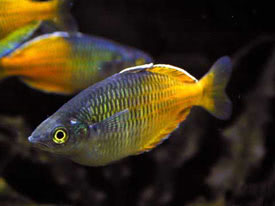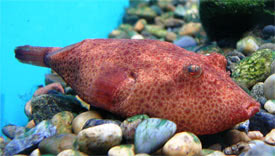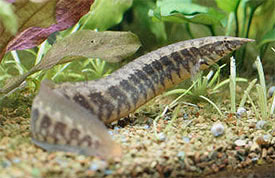
 Magyarul / Hungarian
Magyarul / Hungarian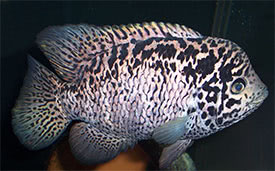

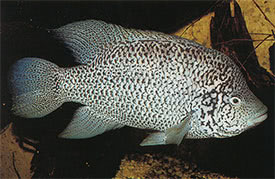
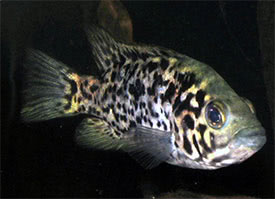
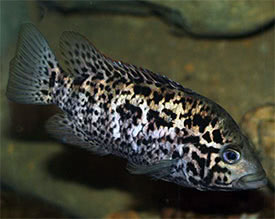
- Scientific name: Nandopsis tetracanthus
- Synonyms:Centrarchus tetracanthus (Valenciennes, 1831), Cichlasoma tetracanthus (Valenciennes, 1831), Chromis fuscomaculatus (Guichenot, 1853), Acara adspersa (Günther, 1862), Heros nigricans (Eigenmann, 1903), Heros tetracanthus torralbasi (Eigenmann, 1903), Heros tetracanthus griseus (Eigenmann, 1903), Heros tetracanthus latus (Eigenmann, 1903), Heros tetracanthus cinctus (Eigenmann, 1903)
- Common name: Cuban Cichlid, Biajaca
- Group: Cichlids
- Habitat: Central America; Cuba
- Size: 25 cm
- Biotope: Inhabits fast-flowing rivers and lakes, often among plants, but can be found in brackish river mouths too.
- Social behavior: A very aggressive cichlid, and may become territorial during spawning, best kept in species tanks.
- Diet: Carnivorous; In nature they eat worms, small fish, shrimps and water insects. In the aquarium they aren’t choosy either, they prefer live and frozen meaty foods, and usually accept cichlid pellets and flakes.
- Breeding: Quite easy
- Tank: Minimum 250 litres.
- Population: 1 pair for 400 litres
- Decoration: Use sandy or small gravel substrate and build hiding places using bogwood or roots and larger stones. Use only hardy plants in their tank as they often destroy plants.
- Temperature: 24-30 °C
- pH: 7-8
- Hardness: 6-16 NK°
- Lifespan: 8-12 years
Description: Cuban Cichlid has a very high, large body. It has a whitish base coloration with a pattern of gray or black spots and stripes. The fins are usually yellowish or green. During the courtship and spawning Nandopsis tetracanthus has a nuptial attractive color where the fins turn dark with red borders. In the wild these fish can grow up to 40-45 cm.
Cuban Cichlid is not easy to sex, but mature males are larger than females, and have longer and more pointed dorsal and anal fins. The most certain way of sexing them is examine their genitalia, as males have pointied, while females have more rounded genitalia. This is easiest to observe close to spawning. Nandopsis tetracanthus is quite easy to breed once a pair has been established, so the best way to get a pair is to buy a small group of juveniles and let them form pairs. The rest of the fish should be removed from the tank when a pair have formed. The eggs are laid on the substrate or on a flat surface, and the parents will protect them. The number of the eggs can be 600. The female fans and cleans the eggs, while the male defends the territory. The eggs hatch in 48 hours and the larvae become free-swimming after another 5 days. The fry can be fed with newly hatched brine shrimp, and once they become larger, they can be fed with other live and frozen foods. Cuban cichlid fry grow relatively quickly.
















